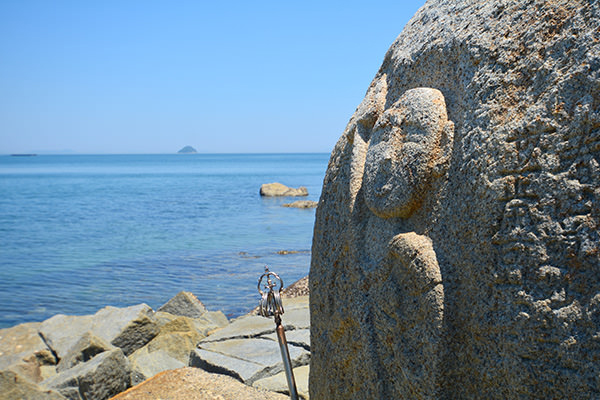- The kanji symbol for KAMI meaning “up” “sky” or “god” is encircled and thus translates to MURA – KAMI as the word round in Japanese is pronounced maru.
- The kanji symbol element can take on many variations, as in all calligraphy, and the “brush stroke” enhancement of the circle is Zen derived
- Graphically suggesting hand-made, individual, unique and artistic.
The Murakami Pirate Legacy
500 Years In The Making
”In a sea of mass produced goods, Murakami products are made with inspiration and bear the marks of authenticity.
Parker Murakami


The Kanji Symbol
A 500 year old symbol of fierce independence emerges!

Murakami Pirate History
The Murakami Pirates were the most famous among the pirates who occupied the Setouchi Inland sea during the Civil War period and were feared by powerful figures at the time.
They established themselves as powerful figures in the mid 15th century after they split into three families. Ever since they dominated the Setouchi Inland sea, which was an important shipping sector with rough sea conditions until the late 16th century when piracy became forbidden due to the act that banned piracy.
The Murakami Pirates came and went through these rough areas of sea, which was also their territory. They were able to remain uncontrolled by the powerful leaders on the mainland due to their incredible navigational skills and force at sea.
The Legend of Tsuruhime
The legend of Tsuruhime, who appears in the stories of the Murakami Pirates. Also referred to as the Jeanne d’Arc of Setouchi, she was born to a family who served Ooyamazumi Shrine for generations. It is said that she protected the island from invaders by leading the Murakami Pirates when she was 16.

Variety of Roles
Although pirates are usually thought to be bandits who take valuables from ships crossing the ocean, Murakami Kaizoku actually maintained order in the Seto Inland Sea.
The Murakami Pirates were also notable for having played a variety of roles, including the enforcer of safety and security of navigation, a navy trusted by famous warrior lords, tradesmen drawing on their strategic location to trade in luxury goods and culture both domestically and internationally, and fishermen making a living from catching fresh seafood.
Battle of Miyajima
The Murakami Pirates proved their strength with an ambush tactic they displayed to backup one of the great warlords of the civil war period, Mori Motonari.
Pirates during the Civil War period were also considered as the samurai of the seas that fought for those with power, and this is what attracts the interest of many modern history fanatics. The Murakami Pirates anchored at the large torii (gateway to the shrine) of the Isukushima Shrine.


Innoshima island and Suigun Castle
Innoshima island was the base of the Innoshima Murakami Pirates.
It is said that the Murakaimi Pirates had such power that they were given police authority from the Muromachi shogun, which ruled Japan in the 15th century. Inno-shima Suigun Castle was built by the Murakami suigun.
Shiratakiyama
The story behind the temple is that it was created by the leader of the pirates who occupied this region in 1569, and served as a monitoring point for the sea lanes.
Along the shrine road to the summit there are over 700 large and small Buddha statues, collectively referred to as the "Gohyaku Rakan". The word "Gohyaku" means the number "500" and the word "rakan" means an attainer of Nirvana. Essentially, these numerous statues lined up in a row are statues of those who have attained nirvana. They are known to have been created in the first half of the 19th century.


Ooyamazumi Shrine
The Three-storied pagoda stands out in the temple on Ikuchijima, an island sandwiched by Innoshima, which was the headquarter of Murakami Kaizoku.
The Ooyamazumi Shrine on Oomishima island was worshipped by warlords around the country as the god of the mountains, the god of the sea, and the god of battle. The shrine was also worshipped by the Murakami Pirates who occupied these seas.
Parker Murakami
Murakami products represent the vitality and independent spirit seeking freedom
Today Parker Murakami keeps his families 600 year legacy alive, through history inspired wearable pieces of art. Made from the finest leathers and earths materials, each piece is hand made in Canada and bear the marks of authenticity.
Products are made with highest quality leathers from around the world. Construction and crafting is executed with care and creativity.

